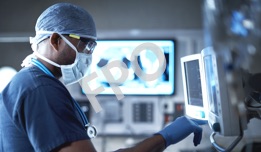Diagnosing Epilepsy
When you come to NewYork-Presbyterian, you benefit from a team approach that starts during your very first visit, when we begin assembling a plan of care. In addition to blood tests and magnetic resonance imaging (MRI) and computed tomography (CT) scanning, our specially trained physicians and neurophysiology technologists perform advanced electrodiagnostic testing to learn more about your seizures. You may have one or more of these tests:
Electroencephalography (EEG or "brain wave test"), an examination of your spontaneous brain activity. We also offer outpatient EEG testing, enabling you to be mobile and go about your day while the testing is being performed over a period of up to 24 hours.
Video-EEG monitoring, which we use to diagnose complex seizure disorders. The procedure requires you to stay in the hospital for four to five days in one of our epilepsy monitoring units. Data generated by this test improve diagnostic certainty and are very helpful in making treatment decisions, including the choice of the most effective antiseizure medication for you.
Intracranial monitoring, if your doctor decides you may benefit from epilepsy surgery, but it is not clear exactly where in the brain your seizures are coming from. Intracranial monitoring may involve the placement of electrodes onto your brain through a larger operation (subdural monitoring) or placement of many electrodes into the brain through small (2 millimeter) holes in the skull (stereo-EEG monitoring), depending on the specifics of your epilepsy. "Stereo -EEG" has changed how we approach many people with complex epilepsy, making it easier to study deep areas of the brain and, when necessary, both sides of the brain. In addition, stereo-EEG is better tolerated then subdural monitoring.
We also use neuropsychological testing to identify your areas of strength and weakness in language, memory, concentration, and other cognitive functions.


